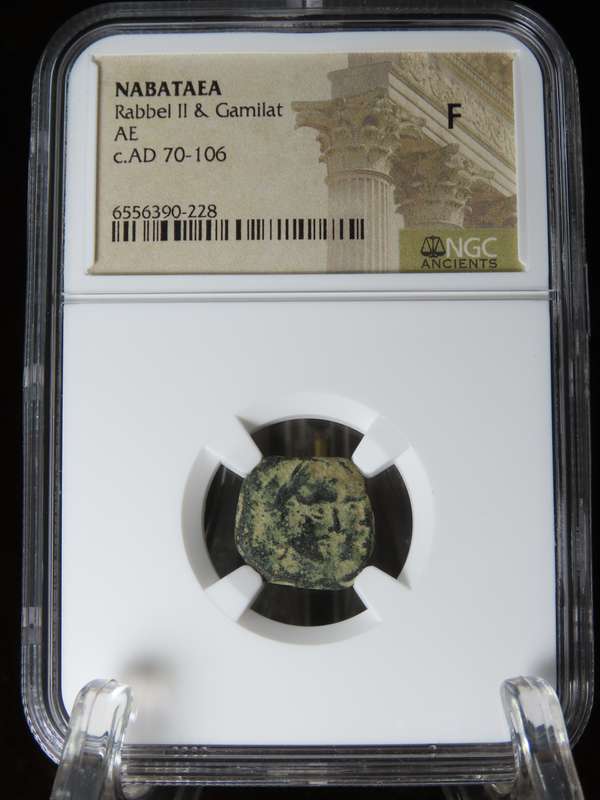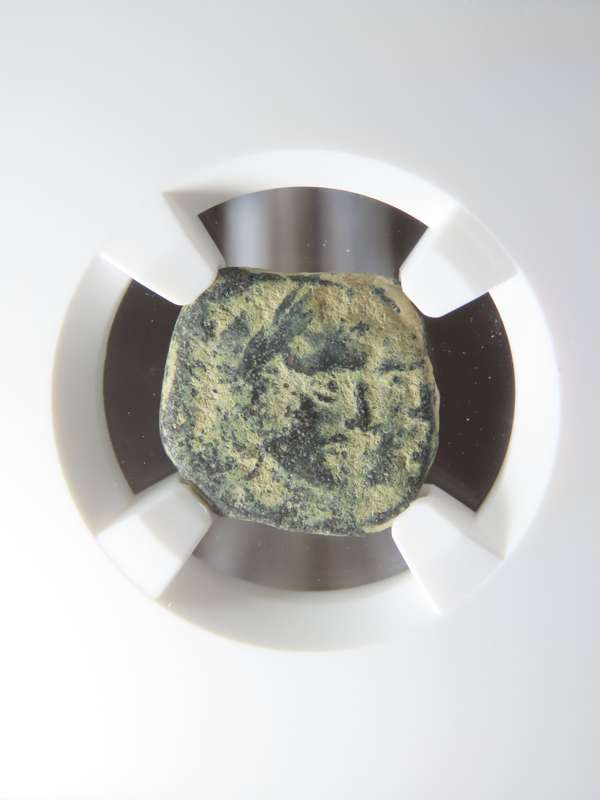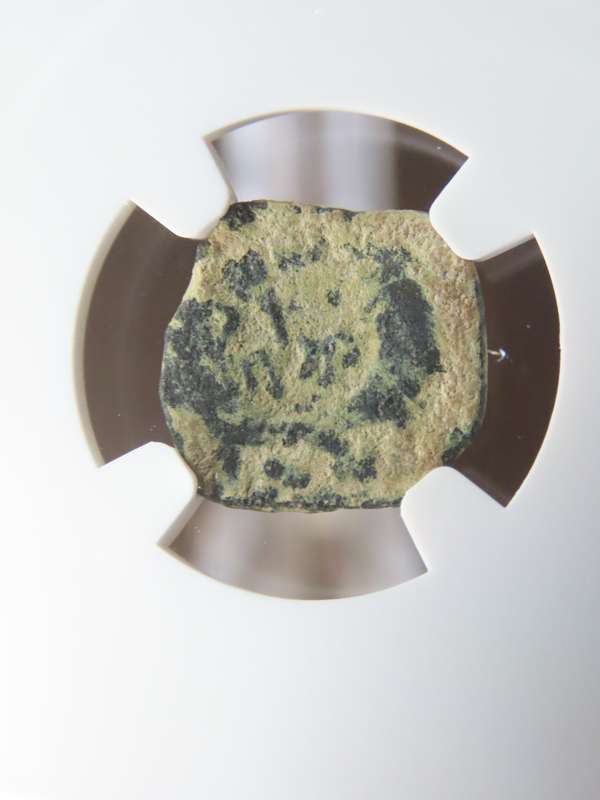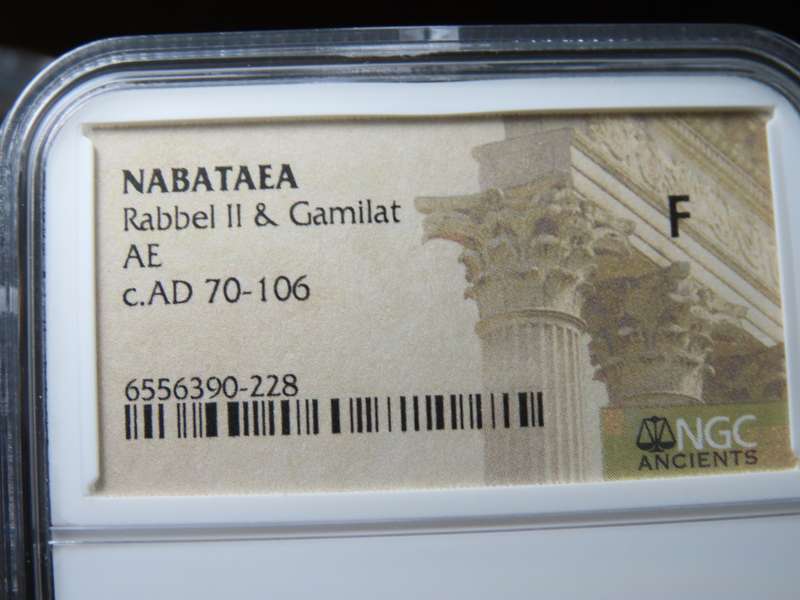









Coins of the Bible - Nabataea, 70 to 106 AD, Rabbel II & Gamilat, NGC F
Check my rate
| Main centres: | 1-3 business days |
| Regional areas: | 3-4 business days |
| Remote areas: | 3-5 business days |










| Main centres: | 1-3 business days |
| Regional areas: | 3-4 business days |
| Remote areas: | 3-5 business days |
Nabataean Kingdom - Rabbel II & Gamilat
70 - 106 AD
NGC - F
Coins of the Bible





A NGC F.
Rabbel II Soter (reigned 70106 CE) was the last king of the Nabataean Kingdom. His reign was marked by relative stability and prosperity, as he maintained the kingdom's role as a critical hub in the regional trade network. Rabbel II was known for his title Soter, meaning "Savior," reflecting his reputation as a protector and benefactor of his people.
Rabbel II ruled alongside his sister and queen, Gamilat, who played a significant role in Nabataean governance and religious life, as evidenced by inscriptions and coinage depicting her alongside the king. Their partnership symbolized the close integration of royal authority and religious devotion in Nabataean culture.
In 106 CE, following Rabbel IIs death, the Nabataean Kingdom was annexed by the Roman Empire under Emperor Trajan, ending its independence. Despite this, Rabbel II and Gamilat's legacy endures in the artistic, architectural, and cultural achievements of the Nabataeans, most famously embodied in the city of Petra.
The Nabataean Kingdom (circa 4th century BCE106 CE) was an ancient Arab state centered in the region of modern-day Jordan, with its capital at Petra, a city renowned for its rock-cut architecture and advanced water management systems. The Nabataeans were skilled traders, controlling key routes that connected Arabia, the Levant, and the Mediterranean, facilitating the trade of incense, spices, and other luxury goods.
The kingdom flourished due to its strategic location and economic prosperity, blending Arab, Hellenistic, and Roman influences in its culture and architecture. Despite its wealth, the kingdom maintained a degree of independence by forming alliances and adapting to dominant powers, including the Seleucids and later the Romans.
In 106 CE, the Roman Empire annexed the Nabataean Kingdom, incorporating it into the province of Arabia Petraea. Although the kingdom ceased to exist politically, its cultural and architectural legacy, particularly in Petra, remains a testament to its historical significance.